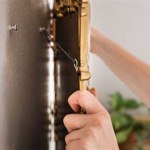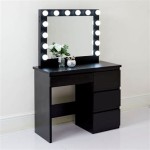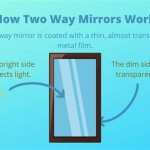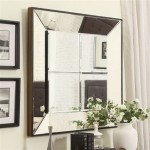Mirror Tiles: A Reflective Choice for Your Kitchen Splashback
Kitchen splashbacks serve a dual purpose: protecting walls from splashes and spills and adding a decorative element to the kitchen design. Among the various materials available for splashbacks, mirror tiles offer a unique aesthetic appeal, bringing brightness and a sense of spaciousness to the kitchen. This article explores the use of mirror tiles as a kitchen splashback, delving into their advantages, disadvantages, installation considerations, maintenance requirements, and design possibilities.
Advantages of Mirror Tile Splashbacks
Mirror tile splashbacks boast several advantages that make them a popular choice for homeowners aiming to enhance their kitchen's aesthetics and functionality. These benefits include brightening the space, creating an illusion of larger dimensions, and offering a unique visual appeal.
One of the most significant advantages of mirror tiles is their ability to reflect natural and artificial light. This reflection significantly brightens the kitchen, especially in areas with limited natural light sources. The increased light levels can create a more welcoming and cheerful atmosphere, making the kitchen a more pleasant space to work in.
Beyond brightness, mirror tiles create an illusion of greater space. Their reflective surface makes the kitchen appear larger and more open. This is particularly beneficial for smaller kitchens where maximizing the perceived size is crucial. The reflection effectively doubles the visual space, making the room feel less cramped and more airy.
Furthermore, mirror tiles offer a unique aesthetic appeal that differentiates them from traditional tile options. They can add a touch of glamour and sophistication to the kitchen design. The reflective surface creates interesting visual effects, playing with light and shadows to create a dynamic and eye-catching feature. The tiles can be arranged in various patterns, further enhancing their decorative potential and allowing for personalization of the kitchen's overall look.
Unlike some porous materials, mirror tiles are generally easy to clean. A simple wipe with a damp cloth and a glass cleaner is usually sufficient to remove splashes and grease. This ease of maintenance contributes to the practicality of choosing mirror tiles for a splashback application where daily cleaning is often required.
Disadvantages and Considerations for Mirror Tile Splashbacks
Despite their appealing qualities, mirror tile splashbacks also present certain disadvantages and require careful consideration before installation. These drawbacks include potential visibility of imperfections, the need for frequent cleaning, fragility concerns, and cost considerations.
The reflective nature of mirror tiles can amplify the visibility of imperfections on the wall behind them. Uneven surfaces or inconsistencies in the wall can be more noticeable when reflected in the mirror. Therefore, it is crucial to prepare the wall meticulously before installation to ensure a smooth and even surface. Applying a leveling compound might be necessary to correct any irregularities.
Although generally easy to clean, mirror tiles require frequent cleaning to maintain their pristine look. Splashes, fingerprints, and watermarks are readily visible on the reflective surface, necessitating regular wiping to prevent the buildup of grime and maintain the desired shine. This increased cleaning frequency might be a deterrent for some homeowners.
Compared to some other tile materials, mirror tiles can be more fragile and prone to scratching or chipping. Extra care is required during installation and everyday use to prevent damage. Using non-abrasive cleaning products and avoiding harsh impacts is essential to preserve the integrity of the mirror surface. Furthermore, the edges of mirror tiles can be sharp, requiring careful handling and proper finishing during installation.
The cost of mirror tiles can vary depending on the size, type, and quality of the tiles. Installation costs can also be higher compared to standard tiles, especially if specialized cutting or patterns are involved. Homeowners should carefully consider their budget and obtain quotes from multiple installers to ensure they are receiving a fair price. The preparation of the wall surface also adds to the overall cost, especially if significant leveling is required.
Installation, Maintenance, and Design Options for Mirror Tile Splashbacks
Proper installation, routine maintenance, and thoughtful design choices are crucial for maximizing the benefits and minimizing the drawbacks of mirror tile splashbacks. These aspects determine the longevity, aesthetic appeal, and overall functionality of the splashback.
Prior to installation, the wall surface must be thoroughly cleaned, dried, and leveled. Any existing paint or wallpaper should be removed. A suitable adhesive specifically designed for mirror tiles is essential to ensure a secure bond and prevent damage to the reflective backing. Precise cutting of the tiles is often necessary to fit around outlets, windows, and other fixtures. Grouting between the tiles is important to prevent water penetration and maintain a clean finish. Silicone sealant should be applied along the edges of the splashback to create a waterproof barrier.
Maintaining the pristine appearance of mirror tiles requires regular cleaning with a soft cloth and a glass cleaner. Avoid using abrasive cleaners or scouring pads, as these can scratch the mirror surface. Addressing spills and splashes promptly prevents them from drying and becoming more difficult to remove. Regular inspection for any cracks, chips, or loose tiles is important to ensure timely repairs and prevent further damage.
Mirror tiles are available in various sizes, shapes, and finishes, offering a wide range of design options. Large format mirror tiles can create a seamless and modern look, while smaller mosaic tiles can add texture and visual interest. Beveled edge tiles can enhance the reflective effect and create a more luxurious appearance. Tinted mirror tiles, such as grey or bronze, can add warmth and depth to the kitchen design. Combining mirror tiles with other materials, such as stainless steel or natural stone, can create a unique and personalized splashback design. Strategically placing lighting fixtures to enhance the reflection and create interesting shadows is an essential element of design consideration.
Choosing the appropriate size of mirror tiles is an important design decision. Using large tiles minimizes the grout lines, creating a more seamless and modern appearance. Smaller tiles, on the other hand, offer greater flexibility in creating intricate patterns and designs. The reflection of the grout lines themselves can also affect the overall aesthetic. Dark grout can create a more defined grid pattern, while lighter grout blends in for a smoother look.
Overall, mirror tiles offer a unique and stylish option for kitchen splashbacks. By carefully considering the advantages, disadvantages, installation requirements, maintenance needs, and design possibilities, homeowners can make an informed decision about whether this material is right for their kitchen. Proper planning, installation, and maintenance are crucial for maximizing the benefits and ensuring the longevity of a mirror tile splashback.

Antique Mirror Kitchen Tiles Splashbacks

Give Your Kitchen An 80 S Inspired Ugrade Mirrored Subway Tile Contemporary Paint

10cms X 20cms Splashback Tiles Made To Measure Mirrors Looking Glass Of Bath

Mirror Splash Back Splashback 6 Unique Benefits

Rococo Mercury Glass Mirror Tile 15x30cm Co

Mirrored Tiles Mirrorworld

Moroccan Tiles Antique Mirror Glass Splashback

Glass Splashback The Kitchen Accessory You Didn T Know Needed Fitted Mirrors And

Mirrored Bevelled Metro Wall Tile 10x30cm Luxury Tiles

Rougholdglass On Instagram Silver Leaf Verre Eglomise Splashback Classy Kitchen Wardrobe Design Diy Decor








